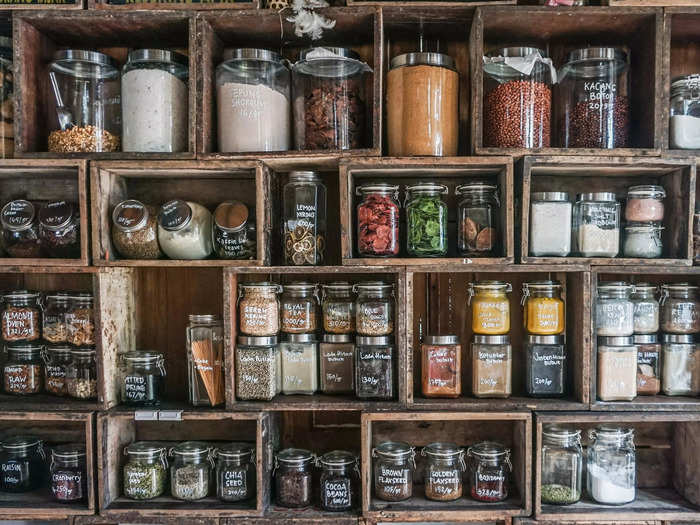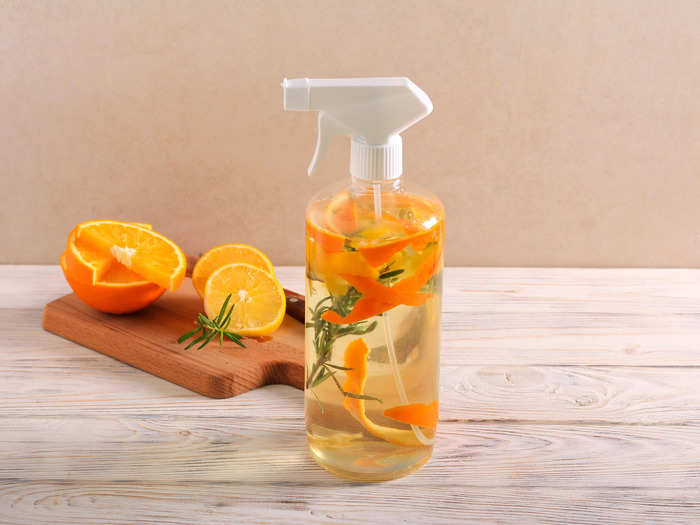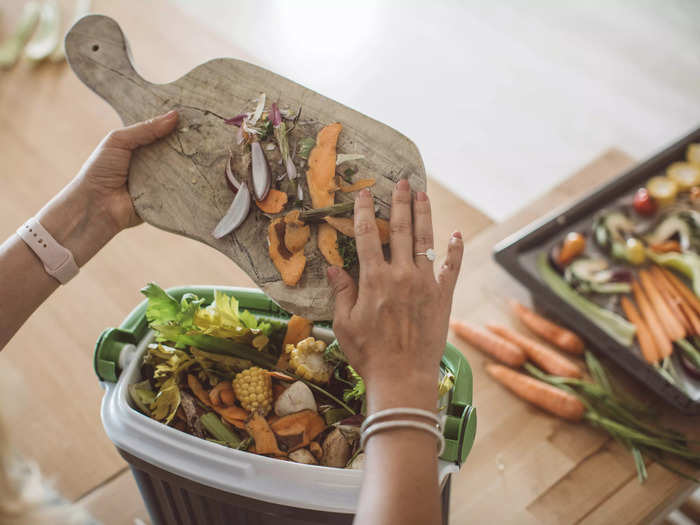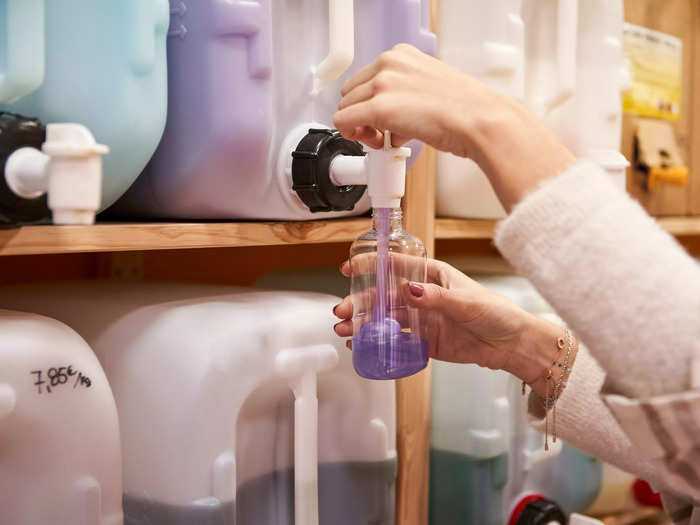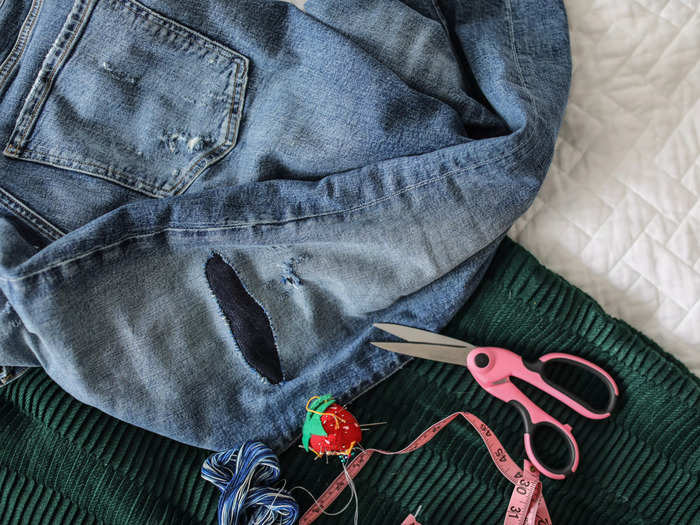Social media creators have shared their sustainable home tips and tricks.Louise Beaumont/Getty Images
- Gen Z is the most sustainable generation yet, choosing eco-friendly options for products at home.
- Switching to zero-waste kitchen and bathroom products cuts down on plastic consumption.
Sustainability has become a key factor in Gen Z's shopping habits, from thrifting clothes to buying from brands with green policies.
TikTok users are sharing tips and tricks from their own green lifestyles, including at home: Videos under the #sustainablehome tag currently have over 95.5 million views, while those under #ecohome have over 72.9 million views.
From homemade cleaning sprays to learning home DIYs, take a look at 5 eco-friendly home hacks recommended by home influencers.
Reusable food storage and containers can keep food fresh while reducing plastic waste.
Glass jars can easily be repurposed to store different food items. Alfian Widiantono/Getty Images
TikToker Jessie-Marie, who makes home and organization videos, told Insider that weekly meal planning is crucial to being more sustainable, reducing over-purchasing at the grocery store and avoiding wasted food.
She organizes her fridge with clear containers so everything can be seen easily, which helps her to avoid forgetting about something and letting it spoil.
Juliana Deliberais, a sustainability content creator and TikToker, agreed, saying: "Single-use plastic wrap and bags are simply too wasteful and not necessary."
Instead, Deliberais opts for reusable silicone covers and food storage bags and said the brand Stasher is her go-to. For half-cut fruit or vegetables, she recommends food huggers.
However, Deliberais' top recommendation is simply repurposing glass jars from food you already bought, such as jam or olives, eliminating the need to buy new storage. Glass containers are more durable and reduce plastic use, plus they're dishwasher-safe, too.
"They also keep your food fresher for longer," Deliberais added.
Experiment with different ingredients to make homemade cleaning sprays, avoiding chemicals and saving money.
Leftover citrus peels are one ingredient option for homemade cleaning sprays. Manyakotic/Getty Images
According to the TikTokers, cleaning sprays can be made quickly and cheaply from simple ingredients you may already have.
Deliberais says using ingredients like vinegar, citrus fruit scraps, and essential oils can clean surfaces just as well as store-bought sprays while minimizing your exposure to chemicals. She added that she loves experimenting with different scents when making her sprays.
However, always make sure you use the right cleaning materials to clean up contaminated spillages.
Jessie-Marie said she mainly uses a homemade cleaning spray as a stain remover for laundry. It consists of half a cup of plant-based dish soap mixed with 1 cup of hydrogen peroxide, housed in a glass spray bottle.
She said it's effective at removing stains like coffee, grass, and even blood from her clothes.
Trying out home composting can reduce your food waste, and it's beneficial for your garden or plants too.
Using food scraps for homemade compost saves on waste. Svetikd/Getty Images
An estimated 30% to 40% of food in the US is wasted, according to the USDA, with new policies aiming to cut food waste in half by 2023.
Deliberais says that using leftovers creatively is a great way to reduce your own food waste, particularly fruit and vegetable scraps, with one easy option being home composting.
Some cities across the US offer each home a compost bin which is collected once a week, but elsewhere you may need to buy your own.
That said, you can make a compost bin from an old container, though it risks leaking or inviting pests into your home. Buying one is an investment that pays off for your garden, too.
When kitchen and bathroom products run out, switching to zero-waste options reduces your plastic consumption.
You can buy zero-waste home products for the kitchen, bathroom and more. Westend61/Getty Images
Eco-friendly options for nearly every product in your home have popped up, but Deliberais says that the most sustainable product is the one you already own.
However, if you need to buy something new or replace items, investing in zero-waste alternatives can reduce both your single-use plastic consumption and the amount of waste left over.
In the kitchen, switching to powdered dishwashing detergent from Dirty Labs has helped Jessie-Marie avoid unnecessary packaging as it comes in a compostable cardboard container. She also now uses laundry detergent sheets due to their cardboard packaging.
For the bathroom, opting for zero-waste hair products, soaps, and body washes is an easy switch. Shampoo and conditioner bars are long-lasting and most come without plastic packaging.
Reusable items like metal straws and fabric grocery bags are also a staple in Jessie-Marie's home.
Learning DIY home repairs is an easy sustainable change, and saves money on replacing items too.
Learning to do home repairs is an easy sustainable change. Angela Auclair/Getty Images
Deliberais recommends that everyone should learn basic DIY repair skills to extend the lifespan of your belongings, from mending clothes and pet toys to upcycling furniture.
Fixing broken items instead of buying new ones might seem like a challenge, but Jessie-Marie explained that there are online tutorials with step-by-step guides to fix just about anything in your home.
Doing DIY on leaky faucets, squeaky doors or loose cabinet handles can save money on hiring professionals.
Jessie-Marie invested in a basic tool kit that she said will last for years, including essential household repair tools like a screwdriver, pliers, a hammer, and a wrench.

